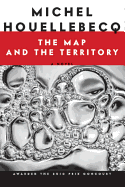
| Publisher: | Knopf | |
| Genre: | Psychological, Fiction, Cultural Heritage, Literary | |
| ISBN: | 9780307701558 | |
| Pub Date: | January 2012 | |
| Price: | $26.95 |
| Fiction |
by Michel Houellebecq, trans. by Gavin Bowd
Jed Martin takes the art world by storm with a sequence of photographic artworks based on Michelin maps. During the next seven years, he creates 42 paintings in his Series of Simple Professions. Then, in 18 months, Jed completes 22 masterpieces in the Series of Business Compositions, including his most famous work, Bill Gates and Steve Jobs Discussing the Future of Information Technology. Then one last definitive portrait--Michel Houellebecq, Writer--rocks the art world, only to be stolen.
You're hardly 10 pages into this Prix Goncourt-winning novel by the notorious bad boy of French letters before Jed considers hiring to write his art catalogue none other than the novelist Michel Houellebecq, "a good author... pleasant to read" with "an accurate view of society." Houellebecq gleefully depicts himself as a depressed, solitary, tobacco-dependent, drunken, financially needy eccentric, hated and scorned by the media.
Jed Martin's story unfolds like a piece of music, each of the three parts a separate movement: Part One is the education of the artist, Part Two is the encounter between two solitary geniuses, and Part Three becomes a brutal murder mystery when one of the main characters is found viciously dismembered, decapitated along with his dog.
The novel never quite recovers from this brutal dismemberment, which is not to deny that Houellebecq has some staggering pluses. At his best, he sees clearly straight into the very heart of our capitalist corporate planet and has the skill to weave his insights into literature. --Nick DiMartino, Nick's Picks, University Book Store, Seattle
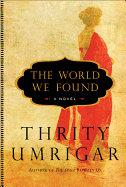
| Publisher: | Harper | |
| Genre: | General, Fiction | |
| ISBN: | 9780061938344 | |
| Pub Date: | January 2012 | |
| Price: | $25.99 |
| Fiction |
by Thrity Umrigar
Thrity Umrigar (The Space Between Us) has written a compelling story of four women, friends since 1970s university days in Bombay. Thirty years ago, they were filled with revolutionary fervor, hoping to be part of the creation of a New India. Their lives have taken very different paths but, despite time and distance, their connection to one another remains strong.
Now, devastating news comes from Armaiti in the United States to Laleh, still in Bombay. Armaiti is very ill and longs to see the three friends she left behind when she married Richard. Laleh's husband, Adish, was a friend to all the girls--they referred to him as "Mr. Fixit"--and his help in organizing this trip will become more necessary than ever. Laleh gets in touch with Kavita immediately; Nishta is harder to find.
Laleh, always a worrier, blames herself, unreasonably, for Armaiti's illness. Years before, during a protest march, Armaiti suffered a concussion, which Laleh believes she could have prevented, and she thinks it is the cause of Armaiti's illness. Kavita's secret is that she has always been in love with Armaiti. Her current relationship with Ingrid is a happy one--but nothing like her hidden passion for Armaiti.
When they find Nishta, they realize that she has been changed dramatically by her marriage to a devout Muslim--Nishta is a prisoner in her home. Her friends rediscover their revolutionary zeal as they--and Mr. Fixit--conspire to get her to the airport. --Valerie Ryan, Cannon Beach Book Company, Ore.
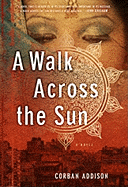
| Publisher: | SilverOak/Sterling | |
| Genre: | General, Fiction | |
| ISBN: | 9781402792809 | |
| Pub Date: | January 2012 | |
| Price: | $24.95 |
| Fiction |
by Corban Addison
A Walk Across the Sun is a debut novel about the sex-traffic trade in underage children. How can that be a satisfying read? Corban Addison has figured it out by combining a love story, two sisters' devotion and a man discovering his true self in this stunning, moving account of one of our world's great shames.
Boxing Day 2004, a tsunami hits southeast Asia: Ahalya, 17, and her younger sister, Sita, cling to palm trees until the water recedes, watching as their world--parents and home--is obliterated. They try to make it to their school, but their ride delivers them to a dingy flat in a shady neighborhood and locks them up. They are then sold to a brothel in Mumbai.
When Ahalya is chosen to make her "debut," Sita is forced to sit outside the room to listen: "It will be a good lesson for her." And so Ahalya becomes a beshya, a prostitute.
At the same time, on another continent, Thomas Clarke's world is crumbling: his wife, Priya, has left him and gone back to Mumbai and his law firm just lost a big case, and he's the scapegoat. He decides to take a pro bono stint with CASE--the Coalition Against Sexual Exploitation--in Mumbai.
He soon participates in a brothel raid, where Ahalya is rescued--but Sita has been sold. The buyer has something other than sex in mind: Sita is to be a heroin mule, transporting drugs to Paris. She is sold over and over, each time for more money, and ends up in the U.S., still a virgin, still valuable.
Ahalya charges Thomas with finding Sita, and binds him with a rakhi bracelet, signifying that Thomas is now Ahalya's brother, and is duty-bound to act in her defense. But he's just a lawyer working for an NGO. What can he do?
As the story builds, the excitement increases along with the horror. The counterpoint of Thomas and Priya's relationship, and the sisters' love for each other, are hopeful antidotes to the darkness. --Marilyn Dahl, reviews editor, Shelf Awareness
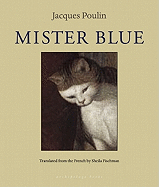
| Publisher: | Archipelago Books | |
| Genre: | Fiction, Literary | |
| ISBN: | 9781935744313 | |
| Pub Date: | December 2011 | |
| Price: | $16 |
| Fiction |
by Jacques Poulin, trans. by Sheila Fischman
Narrated with disarming candor by Jim, the self-described slowest writer in Quebec, Mister Blue unfolds in and around Jim's hodge-podge of a rebuilt house far out in the middle of the bay. Jim's sole companion is his cat, Mister Blue.
One day, Jim notices a set of footprints on the deserted beach near his isolated home that are exactly the same size as his own. They lead to a cave where Jim finds a copy of The Arabian Nights inscribed with the name Marie K. He concludes that Marika, as he calls her, is the owner of the dilapidated sailboat anchored just off the sandy inlet. Grieving over the loss of his wife to a rival referred to only as Superman, repeatedly finding the cave deserted but the bookmark in The Arabian Nights quickly moving forward, Jim becomes spellbound by a woman he can't even manage to meet, while he struggles to write a love story. Meanwhile, Jim becomes involved with the Girls' House, a shelter in Old Quebec for women in distress, and in particular with La Petite, a 16-year-old runaway. Poulin has perfected the art of making simplicity look artless.
This delicate tale is told with Hemingway-like sparseness and minimal melodrama. As usual in life, while our hero relentlessly pursues a woman who may not even exist, real love is happening to him without his knowing. Poulin earns his lump-in-the-throat ending. --Nick DiMartino, Nick's Picks, University Book Store, Seattle
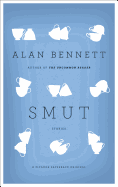
| Publisher: | Picador | |
| Genre: | Fiction, Short Stories (single author), Literary | |
| ISBN: | 9781250003164 | |
| Pub Date: | January 2012 | |
| Price: | $14 |
| Fiction |
by Alan Bennett
Playwright (The History Boys) and actor Alan Bennett gives us a pair of spritely novellas about the perils and sometimes ironic consequences of sexual desire.
The protagonist of "The Greening of Mrs. Donaldson" is a 55-year-old woman "beached on the shores of widowhood after a marriage that had been, she supposed, like many others... happy to begin with, then satisfactory and finally dull." But Jane Donaldson's life takes a decidedly unusual turn when her two young lodgers offer to allow her to observe their lovemaking in lieu of their overdue rent payments. Uncomfortable as she is at first with the offer, when the young couple departs she realizes the experience has "left her with a curiosity, a prurience even, that associating it with freedom, release and a new life, she was not now anxious to suppress." And it enables her to deal deftly with the persistent advances of Dr. Ballyntyne, whose acerbic comments on the performance of the medical students under his tutelage are comic highlights of this gentle story.
One almost needs a scorecard to keep track of the erotic permutations in "The Shielding of Mrs. Forbes." Graham Forbes decides to marry Betty Greene, a woman "not nearly as good looking as himself and even slightly older." But Graham may not be the man his mother believes him to be, and the elder Mr. Forbes's dissatisfaction in his own marriage leads to a deepening of his relationship with his daughter-in-law that might charitably be described as unconventional. A male prostitute enters into this ménage à quatre, and the betrayals and acts of duplicity multiply with dizzying speed and to startling and ultimately hilarious effect. --Harvey Freedenberg, attorney and freelance reviewer

| Publisher: | Morrow | |
| Genre: | General, Fiction, Mystery & Detective | |
| ISBN: | 9780062015662 | |
| Pub Date: | January 2012 | |
| Price: | $25.99 |
| Mystery & Thriller |
by Charles Todd
Scotland Yard Inspector Ian Rutledge, like millions of other Britons, is suffering from the lingering effects of the Great War. He's haunted by the memory of his dead comrade, Hamish--two years after the armistice, he can still hear Hamish's running commentary in his mind. Then a man walks into Scotland Yard claiming his name is Wyatt Russell, and that he murdered his cousin Justin Fowler during the war. Rutledge is intrigued and drives down to the small Essex village, Furham, where the two men came from. He discovers an isolated, unfriendly place, whose people are in a hurry to get rid of strangers, prompting Hamish to observe that they seem to be hiding a guilty secret.
Then, a few days later, Wyatt Russell is found floating in the Thames--except he wasn't really Wyatt Russell, but rather Ben Willet, who also grew up in Furnham. Rutledge is bewildered: Why would Willet impersonate Russell to make a confession? Did Willet know the truth about a murder? Is Justin Fowler actually dead? And why are the people of Furnham so opposed to Rutledge's presence?
The Confession demonstrates the confusion of life in postwar England, as everyone struggles to come to terms with how drastically their lives have changed. Charles Todd carefully delves into the nature of survival and how people cope under the duress of both war and murder. --Jessica Howard, blogger at Quirky Bookworm
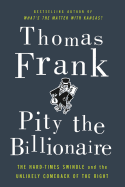
| Publisher: | Metropolitan Books | |
| Genre: | Political Science, Economic Conditions, Conservatism & Liberalism, Political Ideologies, Political Process, Business & Economics, Political Parties | |
| ISBN: | 9780805093698 | |
| Pub Date: | January 2012 | |
| Price: | $25 |
| Political Science |
by Thomas Frank
Like most pundits and historians, Thomas Frank (What's the Matter with Kansas?) thought history was repeating itself in 2008; nearly everyone saw the parallels to the Great Depression, and sure enough, a Democratic president was elected. But the seemingly inevitable path of deficit spending to pay for unemployment benefits, to stimulate the economy and to save businesses took an unexpected turn. Suddenly, instead of being furious at the Wall Street insiders who milked the financial system to its max, many Americans began to be angry at the government for bailing Wall Street out. From there, it was a short step to being furious with the government for interfering with the markets at all. Rather than relying on the government to save them from the vagaries of the economy, as people did in the 1930s, many Americans started turning against the government. Tea Party rallies popped up all over the country.
Frank pithily criticizes this resurgence in the far right's political power, pointing out the fallacies and obfuscations of Tea Party views. He blames people like Glenn Beck for "muddling" the minds of Americans, but he also calls out Democrats for their lack of unified ideology and their unpreparedness to deal with this conservative counterrevolution. Pity the Billionaire is a quick and timely read, full of up-to-the-minute details on the country's political climate and the likely continuance of present political trends based on the current economic situation. --Jessica Howard, blogger at Quirky Bookworm
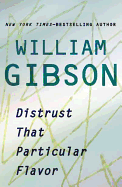
| Publisher: | Putnam | |
| Genre: | Literary Collections, General, Social Science, Essays, Popular Culture | |
| ISBN: | 9780399158438 | |
| Pub Date: | January 2012 | |
| Price: | $26.95 |
| Essays & Criticism |
by William Gibson
William Gibson is a treasure. Having helped create the cyberpunk genre in the 1980s with novels like Neuromancer and Count Zero, Gibson continues to write contemporary fiction (most recently Zero History) with themes and tone similar to his earlier, more easily categorized science fiction. It is a rare gift, then, to read Distrust That Particular Flavor, a collection of essays firmly rooted in the moment in which they were written.
These essays were done for diverse audiences--articles for Wired and Rolling Stone are set alongside talks for BookExpo and the Vancouver Institute. Distrust That Particular Flavor shows us a less authorial William Gibson, laying himself and his ideas out with humility. He writes autobiographical essays about his own encounters with history, covers technology and speaks at length on the possible futures that he did (and did not) presage in his fiction.
As in his fiction, Gibson writes with a precise vocabulary and a density of phrasing that lies in comfortable contrast to an open, engagingly transparent style. He is equally at ease talking about Tokyo, filmmaking and the reality of the early World Wide Web (a medium he was late in coming to). Pick this book up, even if only for the brilliant use of language throughout, and you'll likely find yourself staying for a glimpse into the brain of a culturally significant modern author. --Rob LeFebvre, freelance writer and editor
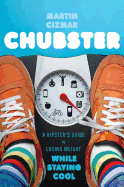
| Publisher: | Mariner Books | |
| Genre: | Health & Fitness, Weight Loss | |
| ISBN: | 9780547559346 | |
| Pub Date: | January 2012 | |
| Price: | $13.95 |
| Health & Medicine |
by Martin Cizmar
Journalist Martin Cizmar's Chubster is a "how to" guide for counting those calories most often consumed by the young and hip--especially the ones from frozen entrees and fast-food establishments. Unhampered by concerns over GMO crops, organic produce, free-range chicken or grass-fed beef, Cizmar (who lost 100 pounds in eight months) bypasses the morality of food and simply explains how most easily and efficiently to take in fewer calories than are burned. The process of successful calorie-counting is covered in helpful depth, from which apps are most accurate to what type of record-keeping fits certain personalities. The Music Snob Hipster, for example, uses "a simple app for your out-of-date cell phone," while the Artsy Fashionista Hipster might prefer a "vintage electronic organizer... an old 32kb Casio," perhaps.
In many respects, Chubster is refreshing: readers for whom losing weight yet remaining "cool" is paramount will find this guide quite helpful, as will those readers for whom health is more important than image. Cizmar debunks many popular theories--i.e., fast food is making us fat, or spicy foods and lifting weights rev up our metabolisms--and insists that eating fewer calories while feeling as satiated as possible is the best way to lose weight. His tone is chatty and witty--or, in his word, "snarky"--and readers will know after just a few pages whether or not Chubster is the right guide for them. --Kristen Galles from Book Club Classics
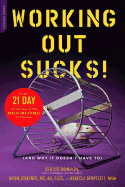
| Publisher: | Da Capo Lifelong Books | |
| Genre: | Health & Fitness, Exercise | |
| ISBN: | 9780738215693 | |
| Pub Date: | January 2012 | |
| Price: | $14.99 |
| Health & Medicine |
by Chuck Runyon, Brian Zehetner, Rebecca A. Derossett
Anytime Fitness CEO Chuck Runyon's brother died during heart transplant surgery at the age of 17, a tragedy that motivated Runyon to help others recognize and embrace the importance of nutrition and fitness in their lives. Although Working Out Sucks focuses on the day-to-day changes in diet and activity required for health and fitness, Runyon's mission is much larger: he firmly believes that fitness increases self-esteem, which in turn improves one's ability to acquire an education, secure a higher paying job and contribute to society.
Working Out Sucks begins by dismantling common excuses for avoiding healthy choices--lack of time, money or motivation--then showcases inspiring stories of Anytime Fitness clients who have successfully lost weight, explaining how to emulate their successes through the use of vision, skills and community support. Subsequent sections tackle nutrition--specifically regarding carbohydrates, fiber, protein, fat, water and supplements--and ways to incorporate more movement into each day, culminating in a 21-day plan for changing habits that includes recipes and workout itineraries.
Although Runyon's advice is geared toward beginners, even the fittest readers will find value in this accessible guide to a healthier lifestyle. In addition, all proceeds go to Limbs for Life, an organization that helps individuals who need prosthetic care. "Yes, working out sucks," Runyon concedes, "but you shouldn't have to lose a limb to appreciate the ones you have." --Kristen Galles from Book Club Classics
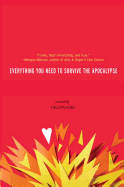
| Publisher: | Simon Pulse | |
| Genre: | Friendship, General, Dating & Sex, Social Issues, Juvenile Fiction, Religious | |
| ISBN: | 9781442423886 | |
| Pub Date: | January 2012 | |
| Price: | $16.99 |
| Children's & Young Adult |
by Lucas Klauss
With all the dystopian books flooding the market, it's easy to mistake this title for a novel about the end of the world. It's not. (Although main character Phillip does like to keep survival supplies on hand. Just in case.)
More than anything, this is the story of a 15-year-old struggling with questions of religion and atheism as he falls in love with Rebekah, who seems to have all the answers. But just like in real life, things are rarely the way they seem. As he grows apart from his friends and deals with various betrayals, Phillip begins to question more than the existence of God. He questions his father's decisions, the mystery surrounding his mother's last days, and his own belief in who he is and who he could become.
Everything You Need to Survive the Apocalypse is a coming-of-age story filled with smart observations and achingly funny insights. Debut author Lucas Klauss develops his characters with honesty and humor, asking thoughtful questions and avoiding easy answers. Not only is Phillip's journey of discovery an enjoyable page-turner, it's provocative enough to keep readers thinking long after they've finished the last page. --Sherrie Petersen, children's book reviewer and blogger
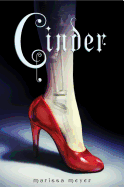
| Publisher: | Feiwel & Friends | |
| Genre: | General, Fairy Tales & Folklore, Science Fiction, Juvenile Fiction | |
| ISBN: | 9780312641894 | |
| Pub Date: | January 2012 | |
| Price: | $17.99 |
| Starred | Children's & Young Adult |
by Marissa Meyer
Once upon a time, in a plague-ridden future, Cinderella was a cyborg supporting herself and her adoptive family as a skilled mechanic.
Marissa Meyer's inventive debut novel opens with 16-year-old Cinder yanking her foot from the socket where the screws are rusting. As she waits for Iko, her android assistant and constant companion, to return with a proper-size foot, a customer arrives at her booth at the weekly marketplace. Cinder recognizes him before her retina display finishes scanning his features: Prince Kaito, crown prince of the Eastern Commonwealth.
Meyer creates a feminist fairytale for modern teens. The prince comes to Cinder because she is the most talented mechanic in the land. He needs her to fix his android before the upcoming festival. They meet as equals. Just after his departure from her shop, Cinder hears a scream. It's her neighbor, a baker who has contracted the plague, and an emergency hover arrives to quarantine her. After placing these cornerstone elements, the author builds a coming-of age story layered with an intergalactic threat of war and plague. Meyer's twists yield tantalizing paradoxes. Cinder knows little of her past, and her search for her identity leads to her sense of purpose. Her stepmother's betrayal in enlisting Cinder into the cyborg draft introduces her to Dr. Erland, in close proximity to the royal family, who provides some key revelations.
This thought-provoking take on Cinderella comes to a satisfying close, and puts in place the markers for the heroine's larger journey. --Jennifer M. Brown, children's editor, Shelf Awareness
For more on Cinder, check out our Maximum Shelf.